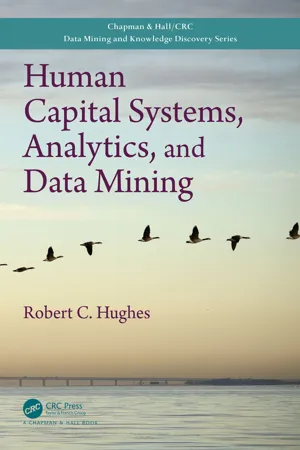SQL Table
An SQL table is a structured collection of data organized into rows and columns. It is a fundamental component of a relational database management system (RDBMS) and is used to store and organize data in a way that facilitates efficient retrieval and manipulation. Tables are defined by a set of attributes, or columns, which specify the type and structure of the data they contain.
3 Key excerpts on "SQL Table"
- eBook - ePub
Information Systems
What Every Business Student Needs to Know, Second Edition
- Efrem G. Mallach(Author)
- 2020(Publication Date)
- CRC Press(Publisher)
...Columns are also called attributes of the entity that the table represents. Example: A column in a student table might store the student’s major. “Major” is an attribute of the entity “student.” Every row in every table has a unique way to identify it, called a primary key. Example: Student ID number. There may be no duplicate keys. (Databases can enforce this rule.) Student name is not a good primary key. Names are not necessarily unique. Phone number is not a good primary key. A student might not have a phone, or might share one with another student. (Likely? No. Possible? Yes.) Keys connect records in different tables with each other. Example: An athletic team roster, instead of storing team members’ majors, stores their student IDs. These IDs identify records in the student table. Those records have the students’ majors. Suppose students’ majors were in both the student table and the volleyball team table. Now Laura switches from English to History. The registrar’s office will update her registration record. The team data will be wrong, perhaps for a long time. Storing the same information more than once, such as having Laura’s major in two tables, is called redundancy. Redundancy leads to errors. Good database design minimizes redundancy. A Note on Language You may hear that these databases are called relational because they relate tables to each other. They do, but that’s not where this name comes from. It comes from mathematics and means, in effect, that all the fields in a record relate to one real-world entity. Had Dr. Edgar Codd, who invented relational databases at IBM in the 1970s, foreseen how much confusion this term would cause, he might have picked another—but it’s too late to change. We’re stuck with that name. Facebook, for example, is a giant database at heart with a “front end” program that takes data from that database and arranges it on web pages. Think about the information Facebook has...
- Robert C. Hughes(Author)
- 2018(Publication Date)
- Chapman and Hall/CRC(Publisher)
...SQL, the common communication language in RDMSs, became a standard of ANSI in 1986 and of the International Organization for Standardization (ISO) in 1987 (International Organization for Standardization 2016). Since then, the standard has gone through many revisions to include an expanding feature group. SQL Language Standards including Data Types are included in the ANSI SQL Standard. Despite the existence of such standards, most SQL code is not completely portable among different RDMS vendors due to their own extensions to the SQL Standard for language components, including Data Types. Data Types have a natural validation effect on Data Base Record activity in that data entered into records cannot violate the Data Type. For example, it is not possible to enter alpha characters into a numeric field. The RDMS engine would automatically reject such an attempt. SQL SQL is the main communication language with RDMSs for creating and managing databases, maintaining databases, and for retrieving information from databases. SQL has three main language components, Data Definition Language (DDL), Data Manipulation Language (DML), and Data Control Language (DCL). DDL DDL is the part of SQL that is used to create and change database structures, including Database Schemas, Tables, Columns, Views, and related objects. Data Design and Modeling Tools such as Oracle SQL Developer Data Modeler provide utilities to automatically generate DDL for deployment of Database Designs directly to a live RDMS Instance. In addition, Data Modeler Systems usually support a number of different Vendor RDMS targets with their own specific DDL variations in terms of SQL grammar and Data Types...
- eBook - ePub
- Janet Valade(Author)
- 2009(Publication Date)
- For Dummies(Publisher)
...(For a more complete description of the MySQL server, see Chapter 1.) The next two sections detail how to do this. Building SQL queries SQL (Structured Query Language) is the computer language that you use to communicate with MySQL. SQL is almost English; it’s made up largely of English words, put together into strings of words that sound similar to English sentences. In general (fortunately), you don’t need to understand any arcane technical language to write SQL queries that work. The first word of each query is its name, which is an action word (a verb) that tells MySQL what you want to do. The queries that I discuss in this chapter are CREATE, DROP, ALTER, SHOW, INSERT, LOAD, SELECT, UPDATE, and DELETE. This basic vocabulary is sufficient to create — and interact with — databases on Web sites. The query name is followed by words and phrases — some required and some optional — that tell MySQL how to perform the action. For instance, you always need to tell MySQL what to create, and you always need to tell it which table to insert data into or to select data from. The following is a typical SQL query. As you can see, it uses English words: SELECT lastName FROM Member This query retrieves all the last names stored in the table named Member. More complicated queries, such as the following, are less English-like: SELECT lastName,firstName FROM Member WHERE state=”CA” AND city=”Fresno” ORDER BY lastName This query retrieves all the last names and first names of members who live in Fresno California and then puts them in alphabetical order by last name. This query is less English-like but still pretty clear. Here are some general points to keep in mind when constructing an SQL query, as illustrated in the preceding sample query: Capitalization: In this book, I put SQL language words in all caps; items of variable information (such as column names) are usually given labels that are all or mostly lowercase letters...


